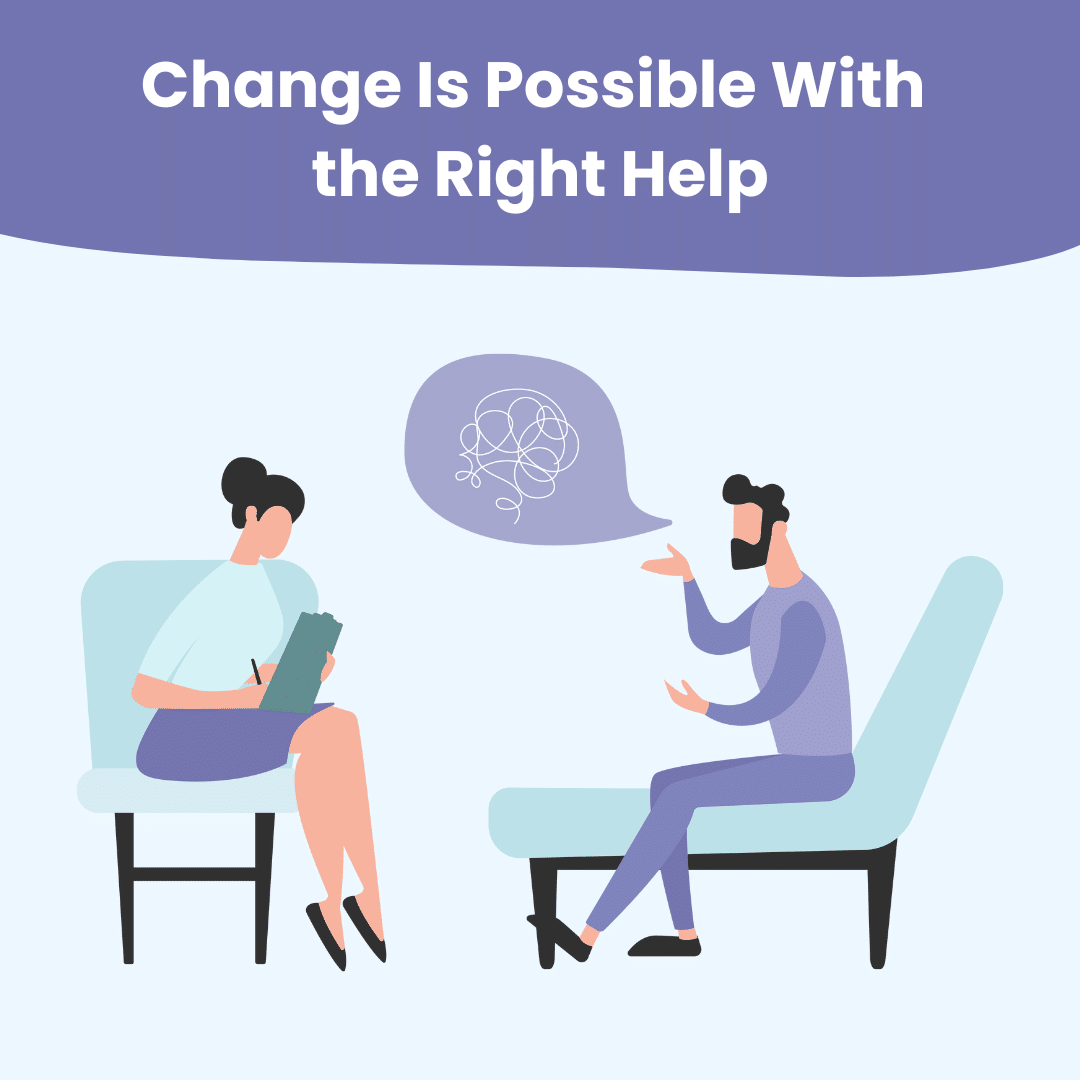
- Updated on 17 July 2024
If this is your first time trying therapy, or you simply want to look into the different types of therapy to make a choice, you are at the right place.
You may have noticed that there are several types of therapy available. Some approaches may work best for specific mental health issues, while others could help with multiple disorders at once.
For example, dialectical behavioural therapy has been proven successful in treating specific conditions such as borderline personality disorder.
CBT, in contrast, could help with multiple issues such as depression, social anxiety, low self-esteem etc.
Here’s a look at the four most common types of therapy. The information provided about the approaches can help you make a choice that best fits your needs.
Which Therapy Is Best for You?
Before we explore the types of therapy, you may want to note that both you and your Therapist will work together to choose an approach.
During the initial sessions, you may talk about your problems, emotions, and approaches that you think will help you best.
Once your Therapist receives an overall picture of your life, they may recommend a few therapeutic approaches.
Depending on your issues and severity, you may work with one particular type or a combination of several types.
Sometimes, what’s best for you may differ from what you have in mind. Hence, have an open conversation with your Therapist about your concerns before moving on!
4 Types of Therapy
1. Psychodynamic Therapy
If you prefer talking about your feelings, you may benefit from psychodynamic therapy.
The psychodynamic approach is a type of therapy that helps you understand how your past experiences may have influenced your current thoughts and behaviours.
During sessions, you may talk and explore your feelings with a Malaysian Therapist. Your Therapist may ask you several questions to help you learn more about yourself.
Psychodynamic therapy can help you with issues such as:
- Feeling sad for no reason
- Depression
- Anxiety
- Having relationship issues
- Suffering from disordered eating
- Chronic pain
The psychodynamic approach aims to bring your unconscious/subconscious (ie thoughts hidden in your mind) feelings to the surface.
For example, if you struggle with making new friends, a therapist may help you see that this could be due to a fear of intimacy that may have started in your childhood.
Psychotherapy can take months or years, depending on your issues and therapy goals. Rather than focusing only on the problem, this approach may help you dig deep into the root causes of the issues and make big changes in how you function.

2. Cognitive Behavioural Therapy (CBT)
CBT is a type of therapy that helps you address two elements: cognition and behaviour.
Your Therapist may help you replace unwanted or negative thoughts and actions with productive ones. In other words, your thoughts and behaviours are interconnected.
For example, if a person believes they are not smart, they may avoid engaging in complex tasks – which may then reinforce the negative belief.
However, a therapist may use skills like cognitive reframing to change the belief.
What proof does the person have for believing they are not smart? Where can they look for the proof?
The person may learn to break the negative cycle through introspective questions such as the above.
CBT can help with issues such as:
- Generalised anxiety disorder
- Depression
- Low self-esteem
- Sleep issues
- Feeling emotional all the time
- Lack of social skills
- Substance use disorder
- Caregiving stress
During CBT therapy, your Therapist in Malaysia may work with you to build a positive therapeutic alliance.
As you begin to open up and build a good rapport with the Therapist, you will also progress more actively outside sessions.
CBT also teaches you life skills that may last long after your therapy ends.
3. Dialectical Behaviour Therapy (DBT)
DBT is a type of therapy that can help you manage and control your emotions better.
Scientists first developed DBT to specifically help with the symptoms of borderline personality disorder. However, the approach has evolved over time to address several other concerns with just as much effectiveness.
DBT therapists may focus on helping you accept your feelings and learn coping skills to manage highly distressing situations.
The term ‘dialectical’ means working with opposing forces. Hence, in addition to accepting yourself, you may also learn the power of changing negative qualities.
Seeking DBT sessions consistently and having a good relationship with your Therapist is key to receiving the best support.
DBT teaches you several key skills, such as:
- Handling intense emotions without losing control
- Accepting difficult situations without feeling the need to change them
- Becoming aware of the present moment (eg grounding techniques)
- Improving your relationships with others
- Learning communication and interpersonal skills
People often choose DBT to receive support for:
- Depression
- Eating disorders
- Self-harm behaviours
- PTSD
- Binge eating disorder
4. Humanistic Therapy
The humanistic approach is a type of therapy that helps you understand how your thinking affects your choices, especially when your decisions cause distress.
Your Therapist will provide unconditional support and space for you to talk about your feelings. The expert will listen to you without clouding your speech with their opinions and help you feel good about yourself.
You may be in charge of what you want to talk about during humanistic therapy. Your Therapist in Malaysia may ask questions to understand you better.
There are several subtypes in humanistic therapy, including but not limited to:
- Existential therapy: Helps you think about your choices and freedom (ie free will)
- Person-centred therapy: The entire therapy may revolve around you and your issues
- Gestalt therapy: Helps you identify unresolved issues and how they may have affected you now
Humanist therapy can help with issues such as:
- Long-term illness
- Trauma
- Depression
- Relationship issues
- Addiction
- Lack of clarity or purpose in life

How to Make a Choice
Choosing the right type of therapy can be tricky as there are several options to choose from.
Ask yourself some questions to reflect on what kind of therapy can help you best. For example:
Do you think you are always at fault? Do you feel like you are not enough and want to change that?
Firstly, try to think about what you need help with. For example, CBT can help if you want to change your thinking patterns or how you view the world.
Psychodynamic therapy may be helpful if you want to understand your feelings better or explore deeper issues.
Secondly, reflect on what makes you feel comfortable. Some people may prefer having clear steps to follow, which CBT offers.
Others may prefer a flexible and exploratory approach, which humanistic or psychodynamic therapy could offer.
Remember that your Therapist will work with you to decide on an approach. Hence, try to be open to suggestions!
If you start with one Therapist or type of therapy and it does not feel right, it is okay to look for a different professional.
Finding the right fit means finding someone who makes you feel safe and understood.
Takeaway
If you’re new to therapy or exploring different types to find the best fit, you may have to understand and assess the benefits of each type. There are several types of therapy, each suited to different mental health issues.
For instance, dialectical behavioural therapy (DBT) is known to successfully manage borderline personality disorder or mood swings issues. In contrast, cognitive behavioural therapy (CBT) can help with a range of issues like depression and anxiety.
Working with your therapist to choose an approach that fits your needs is important. Whether you opt for psychodynamic therapy to delve into your past, CBT to change negative thought patterns, DBT to manage intense emotions, or humanistic therapy for personal growth, finding the right match is key.

Related Articles
Latest Articles
Recent Posts
- Understanding Employee Assistance Programs in Singapore (And Why Your Company Needs One)
- A Therapist’s Guide to Setting Boundaries with Parents
- Anger Management in Singapore: Top 6 Benefits
- Individual vs Group Counselling in Singapore: What’s Right for You?
- Thinking of Switching Your Therapist in Singapore? Read This First


